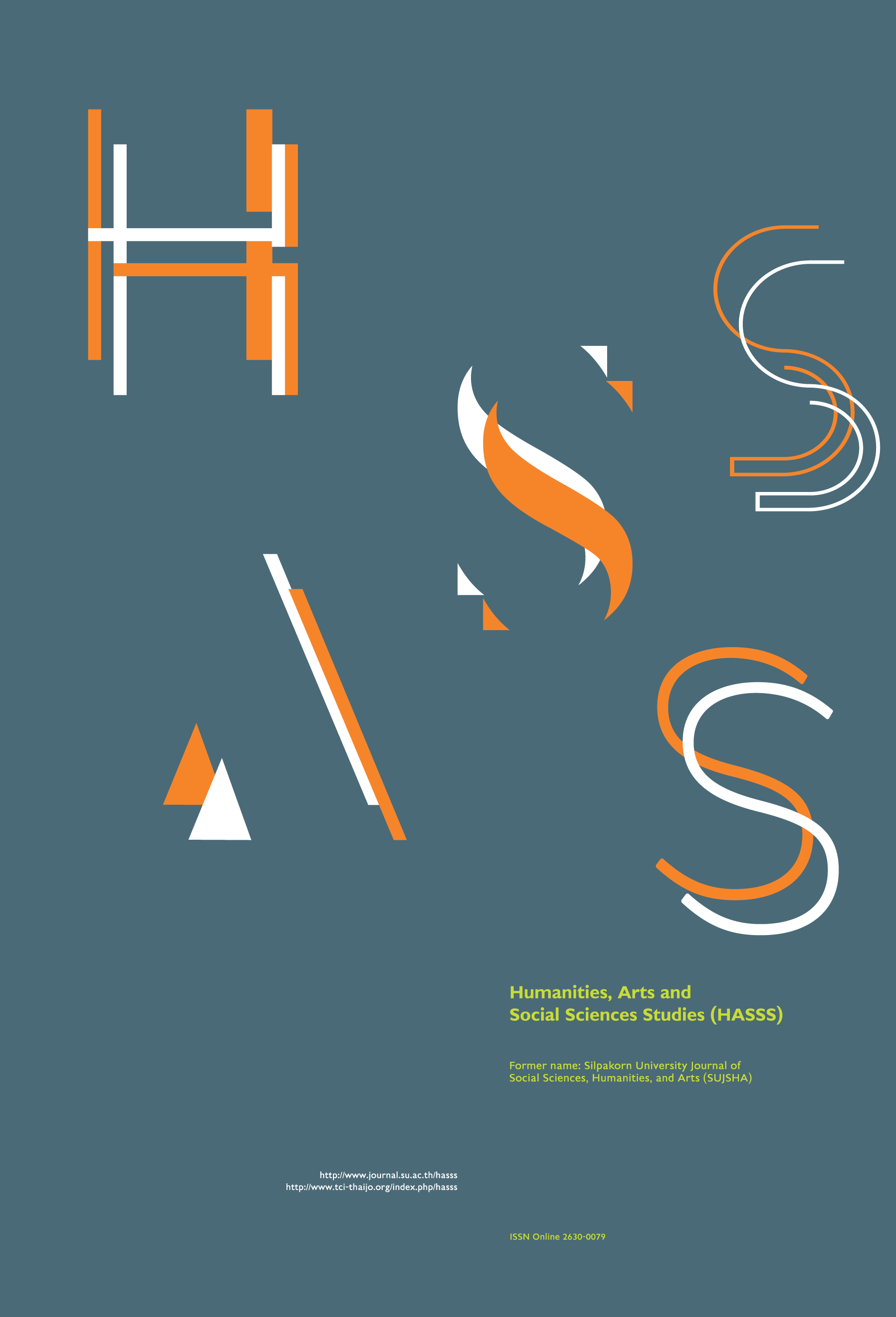Linguistic indicators of negative-perspective language in women’s depressive disorder
Main Article Content
Abstract
Depressive disorder impacts physical health and affects a patient’s life. Analyzing the language of depressive disorder patients can serve as a means of psychological assessment. This study analyzes the negative perspective of depressive disorder patients via linguistic analysis in 12 female patients from Lampang Hospital. Data was collected through interviews conducted with the patients in which they discussed their depressive experiences. Through Systemic Functional Linguistics, it is proven that linguistic analysis can be used to represent the negative perspective of patients with depression. The results show that the negative perspective of depression can be indicated on all linguistic levels: textual, syntactic, lexical, and pragmatic. At the textual level, thematic analysis and connectors are analyzed in the data. At the syntactic level, transitivity is analyzed to reflect the ideational function of patients through four processes: material, relational, mental, and existential. At the lexical level, lexical choice is analyzed to represent the negative experience of patients. The negative perspectives are indicated in various ways, such as negative thought, negative routine, negative behavior, hedging, and referencing. At the pragmatic level, conceptual metaphor, self-blame, and presupposition can represent the negative perspective of patients with depression. This research shows that linguistic strategies of analysis can indicate the language functions of a female patient with depressive disorder.
Downloads
Article Details
All rights reserved. Apart from citations for the purposes of research, private study, or criticism and review,no part of this publication may be reproduced, stored or transmitted in any other form without prior written permission by the publisher.
References
Angkapanichkit, J. (2004). Discourse Analysis. Bangkok: Thammasart University Press. [in Thai]
Angkapanichkit, J., Rochanahastin, A., Intasian, S. and Prasithrathsint, A. (2019). Language, Communication, and Depression: An Exploration of Communicative Practices about Depression for Sustainable Quality of Life of Thai Adolescents (RDG59H0029). Bangkok: Thailand Research Fund.
Braun, V. and Clarke, V. (2006). Using thematic analysis in psychology. Qualitative Research in Psychology 3(2): 77-101.
Halliday, M. A. K. (1985). Introduction to Functional Grammar. London: Edward Arnold.
Hunsringam, S. (2011). A Semantic and Pragmatic Study of Thai Sentences with "Thummay". Master's Thesis. Chulalongkorn University, Thailand.
Karimi, N., Lukin, A., Moore, A. R., Walczak, A. and Butow, P. (2018). Advanced cancer patients’ construction of self during oncology consultations: a transitivity concordance analysis. Functional Linguistics 5(1): 6-29.
Lachmar, E. M., Wittenborn, A. K., Bogen, K. W. and McCauley, H. L. (2017). #MyDepressionLooksLike: Examining Public Discourse About Depression on Twitter. JMIR Mental Health 4(4): e43.
Lakoff, G. and Johnson, M. (2003). Metaphors We Live By. Chicago: University of Chicago Press.
Lavanty, B. (2015). Describing Emotions: Major Depressive Disorder and Conceptual Metaphor Theory. Master's Thesis. Case Western Reserve University, USA. [Online URL: http://rave.ohiolink.edu/etdc/view?acc_num=case1428942943] accessed on June 23, 2020.
Lewis, S. E. (1995). A search for meaning: making sense of depression. Journal of Mental Health 4 (4): 369-382.
Munandar, A. (2019). Death-related expressions in Javanese angkating layon speech and English eulogy. Indonesian Journal of Applied Linguistics 8(3): 515-524.
Nolen-Hoeksema, S. (1987). Sex differences in unipolar depression: evidence and theory. Psychological Bulletin 101(2): 259-282.
Nurbayan, Y. (2019). Metaphors in the Quran and its translation accuracy in Indonesian. Indonesian Journal of Applied Linguistics 8(3): 710-715.
Pan, J., Liu, B. and Kreps, G. L. (2018). A content analysis of depression-related discourses on Sina Weibo: attribution, efficacy, and information sources. BMC Public Health 18(1): 772.
Rotenstein, L. S., Ramos, M. A., Torre, M., Segal, J. B., Peluso, M. J., Guille, C., Sen, S. and Mata, D. A. (2016).
Prevalence of depression, depressive symptoms, and suicidal ideation among medical students: a systematic review and meta-analysis. JAMA 316(21): 2214-2236.
Stoppard, J. M. (2000). Understanding Depression: Feminist Social Constructionist Approaches. London: Routledge.
Troisi, A. and Moles, A. (1999). Gender differences in depression: an ethological study of nonverbal behavior during interviews. Journal of Psychiatric Research 33(3): 243-250.
Van Dijk, T. A. (1997). Discourse as Interaction in Society. In Discourse Studies: A multidisciplinary introduction Vol. 2, edited by T. A. van Dijk, pp. 1-37. London: SAGE Publications.
Zappavigna, M. and Martin, J. R. (2018). #Communing affiliation: social tagging as a resource for aligning around values in social media. Discourse, Context & Media 22: 4-12.


